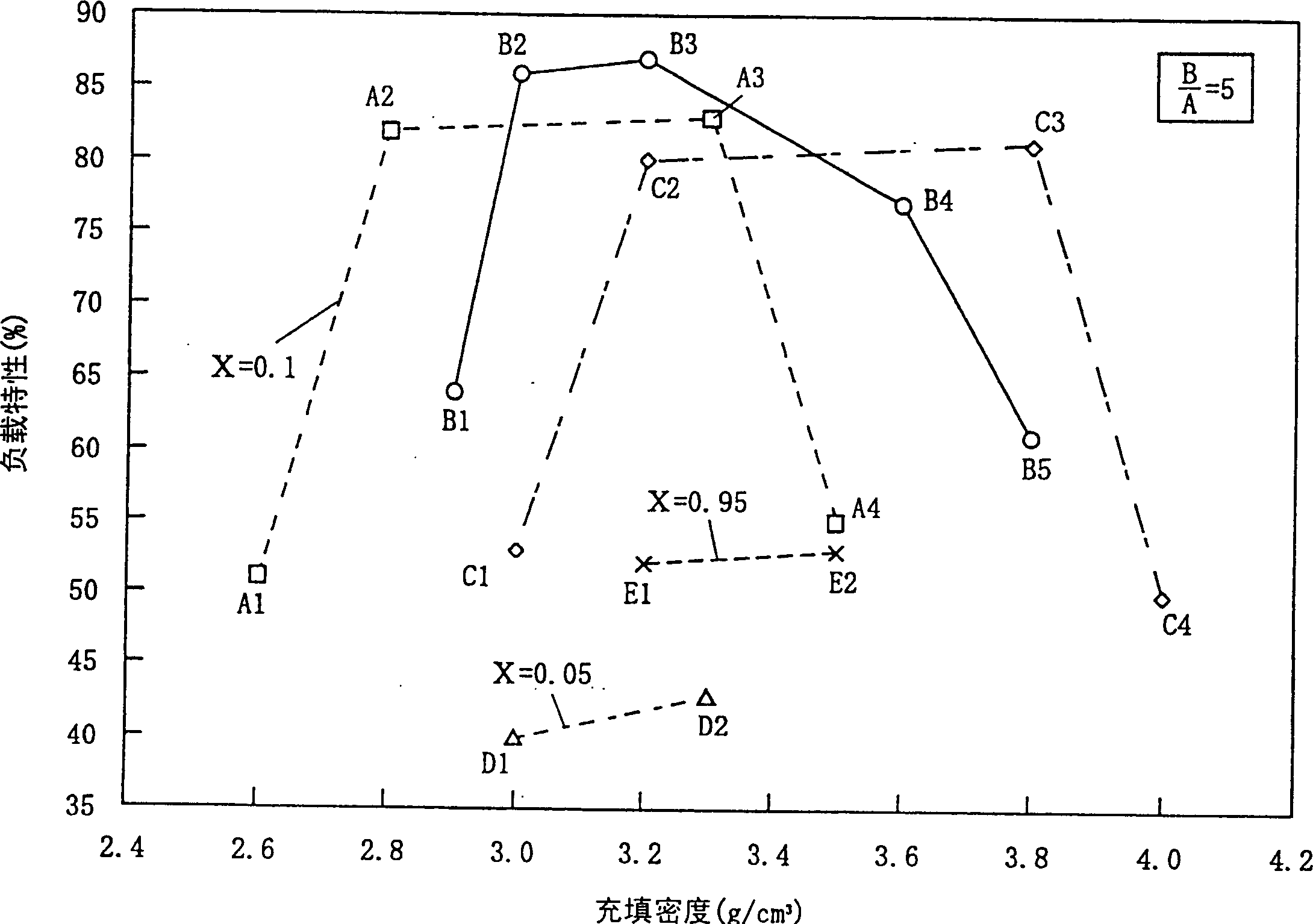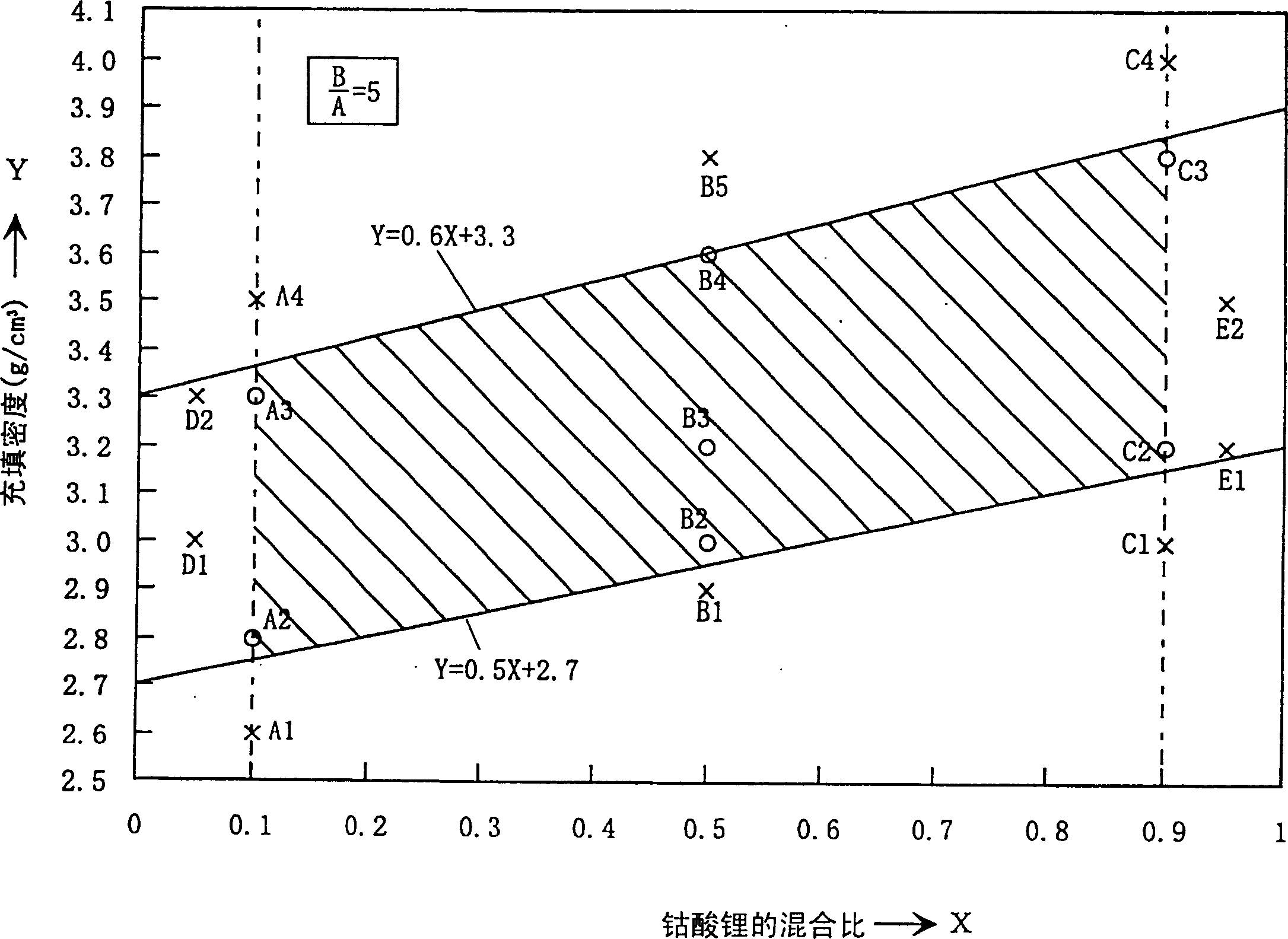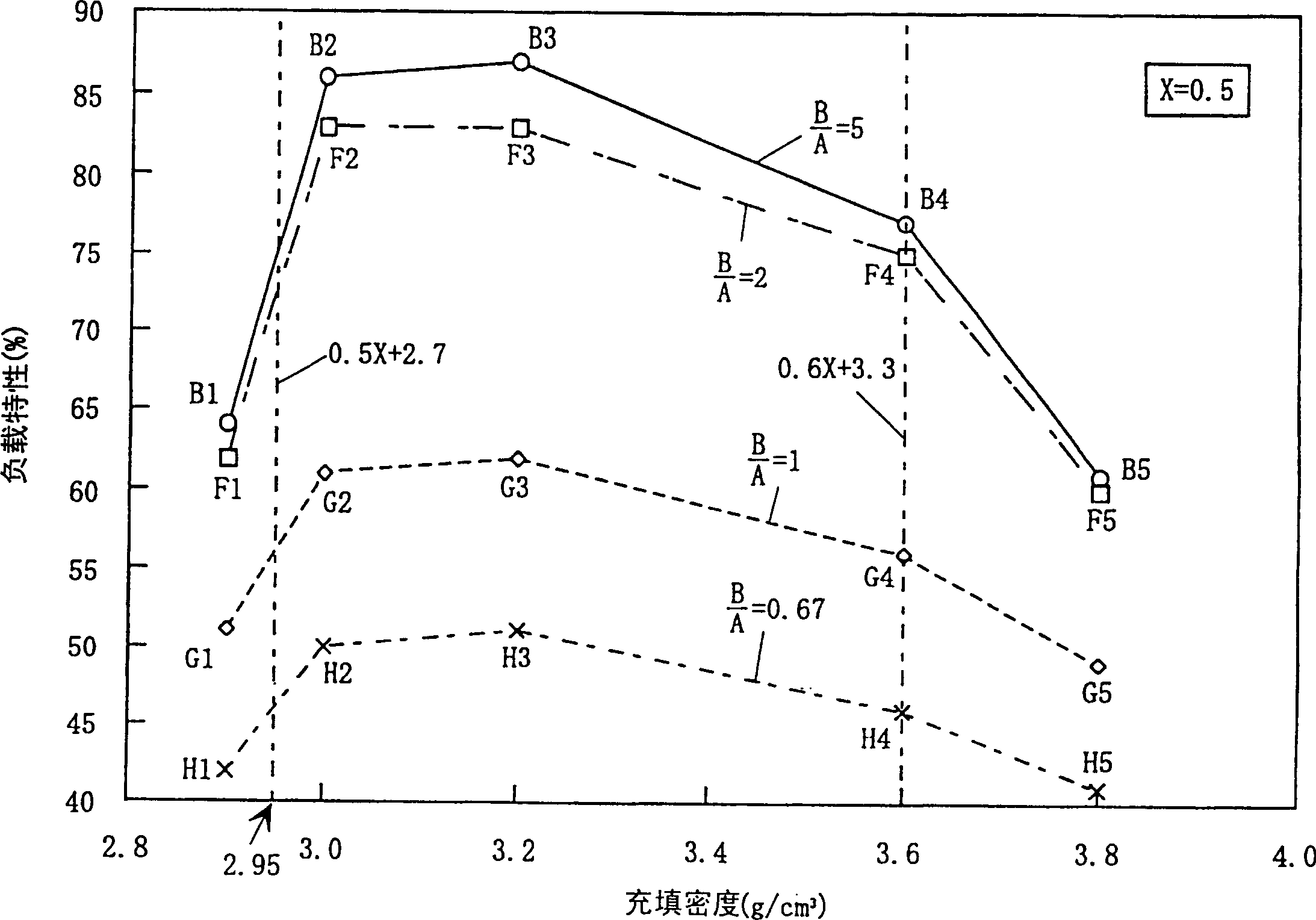Lithium secondary cell
A lithium secondary battery, battery technology, applied in secondary batteries, battery electrodes, non-aqueous electrolyte batteries, etc., can solve the problems of reduced load characteristics such as deep discharge characteristics, difficult to exist crystal planes, and reduced electrolyte permeability.
- Summary
- Abstract
- Description
- Claims
- Application Information
AI Technical Summary
Problems solved by technology
Method used
Image
Examples
Embodiment Construction
[0025] Embodiments of the present invention are described below
[0026] 1. Preparation of mixed cathode active material
[0027] First, as a positive electrode active material, lithium cobaltate (LiCoO 2 ) powder and spinel lithium manganese oxide (Li 1.07 mn 1.89 Mg 0.04 o 4 )powder. In addition, the average particle diameter here refers to observing various active material powders with a SEM (scanning electron microscope), measuring the size of secondary particles formed by agglomeration of primary particles, and obtaining the average size of these secondary particles. value. At this time, the average particle size ratio B / A of the lithium cobaltate powder and the spinel-type lithium manganate powder was 5.0 (B / A=5).
[0028] Next, these lithium cobalt oxide powders and lithium manganese oxide powders were mixed according to a given mass ratio to prepare mixed positive electrode active materials a, b, c, d, and e respectively. In addition, here, the addition ratio (ma...
PUM
| Property | Measurement | Unit |
|---|---|---|
| particle size | aaaaa | aaaaa |
| particle size | aaaaa | aaaaa |
| thickness | aaaaa | aaaaa |
Abstract
Description
Claims
Application Information
 Login to View More
Login to View More - R&D
- Intellectual Property
- Life Sciences
- Materials
- Tech Scout
- Unparalleled Data Quality
- Higher Quality Content
- 60% Fewer Hallucinations
Browse by: Latest US Patents, China's latest patents, Technical Efficacy Thesaurus, Application Domain, Technology Topic, Popular Technical Reports.
© 2025 PatSnap. All rights reserved.Legal|Privacy policy|Modern Slavery Act Transparency Statement|Sitemap|About US| Contact US: help@patsnap.com



